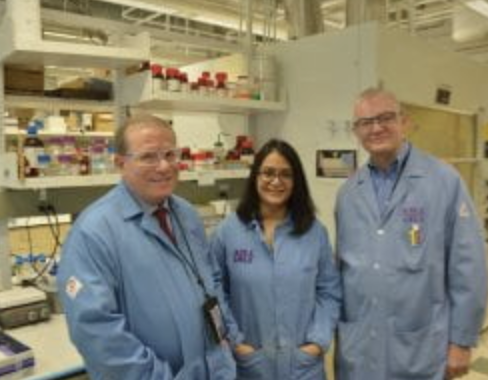Northwestern Completes In-Depth Study of Lab Injuries, Prevention Tactics
 Abha Gosavi is quick to put her science — and safety — under the microscope.
Abha Gosavi is quick to put her science — and safety — under the microscope.
The fifth-year doctoral student researching nanotechnology and fabrication techniques is also a safety designate and founding member of Northwestern’s Research Safety Student Initiative (RSSI).
“Safety in a university research setting is sometimes considered a bureaucratic hurdle rather than an integral part of science, but there’s inherent risk and we need to be respectful of that fact,” says Gosavi, who points out that in a chemistry lab, touching any surface without the use of protective gloves can pose a danger.
Gosavi maintains keen interest in lab worker wellbeing, having become the safety designate for the Notestein group and Mirkin lab in 2015. In collaboration with Research Safety, Gosavi is responsible for regular lab inspections, maintaining safety supplies, ensuring safe working practices, and the disposal of hazardous waste in each lab. Chad Mirkin, the George B. Rathmann Professor of Chemistry, and Justin Notestein, chemical and biological engineering, co-advise Gosavi.
“Becoming a research safety designate was eye-opening and a 2017 visit to DowDuPont made me so much more aware of the safety culture differences that often exist between industry and academia,” says Gosavi. In 2016, Gosavi began working with Markus Schaufele, standards, compliance, and emergency planning manager; and Michael Blayney, Research Safety director, on a University-wide safety review.
The study provides a retrospective analysis of laboratory-associated injuries between 2010 and 2017. Cuts, lacerations, and punctures accounted for nearly two-thirds of laboratory incidents during that time and additional research was conducted to produce risk and cost assessments.
Gosavi found that the median cost these common injuries remained consistent throughout the eight years studied, although the total number of injuries reported at Northwestern has fallen dramatically since 2012. Junior faculty and staff (37 percent), graduate students (33 percent), and postdoctoral fellows (24 percent) were the largest groups affected, with summer quarter (31 percent) the most likely time of injury.
The team’s full research results were published November 22 in the Journal of Chemical Health and Safety.
“After implementing a program to enhance the widespread adoption and routine use of cut resistant gloves in our research laboratories, we are already seeing an anecdotal reduction in the frequency of cuts and lacerations,” says Blayney, adding that metrics will be updated annually so that progress can be tracked. “Abha exemplifies how research can influence the education and careers of our students in novel ways. She made us better with her curiosity and Northwestern was able to provide a terrific opportunity for her to enter the workforce as a seasoned safety advisor.”
Current work on improving research safety at the University focuses on the overlap between the roles and responsibilities of principal investigators, institutional administration, and students in promoting a strong culture of safety.
“There is increasing recognition that the empowerment of students and staff — through groups like the RSSI — is key to further strengthening safe lab culture,” says Gosavi, who is expecting to graduate in summer 2019 before starting a job at Intel as a process development engineer. “Once a new safety regulation is instated and followed, over time it becomes second nature, and when research labs are safer, better science results.”
By Roger Anderson